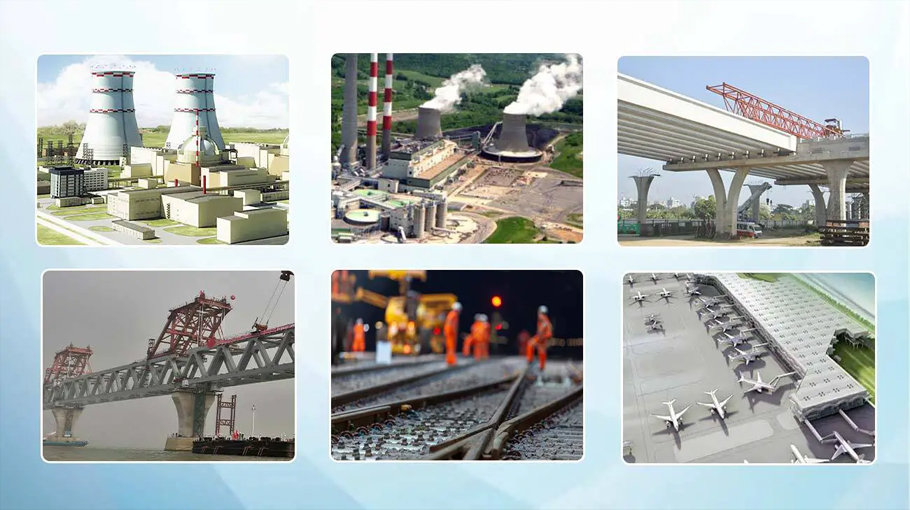Mega infra dev project for economic development

The government will improve the quality of life of the people of South Chattogram region through infrastructural development, making an important contribution to economic development and elimination of inequality.
As part of the government move, a project titled, “South Chittagong Regional Development (SCRD)' approved recently at an estimated cost of Tk 3,644.92 crore, a Planning Commission official said, adding that the local government engineering department will complete its implementation by December 2028.
According to the Planning Commission, the Local Government and Rural Development Strategy of the 8th Five Year Plan will ensure necessary investment in infrastructure development.
Achieving economic growth through this is considered as an important strategy for urban development and therefore the project is in line with the Eighth Five Year Plan. The Planning Commission has already approved the project in its meeting.
However, the Japan International Cooperation Agency (JICA) is providing loan to increase the infrastructure facilities of the camp areas to cope with the pressure of the displaced Rohingyas from Myanmar.
Planning Secretary SatyajitKarmakar said that through the project, it will be possible to build various infrastructures in the South Chattogram region for the economic development of the people and eliminate inequality.
Out of the total cost of the project, Tk 1,147.87 crore will be spent from government funds and Tk 2,497.05 crore from JICA loan assistance.
In February 2021, under the Japanese ‘ODA’ loan project, the government had a plan to develop public infrastructure in the south-Chattogram region and improve the living conditions of the affected locals due to the arrival of displaced people from Rakhine state in Myanmar.
For this reason, a loan agreement was signed between the government and the Japanese government on June 28 last year in favor of the South Chattogram Regional Development Project.
Through the project, it will be possible to build various infrastructures in the South Chattogram region and eliminate the economic development and inequality of the people, he mentioned.
The project proposal states that the ‘Bay of Bengal Industrial Growth Belt’ or Big-B concept has been mentioned in the joint statement signed between the Japanese government and the country's Prime Minister in 2014 to accelerate industrialization along the Dhaka-Chattogram-Cox's Bazar belt which would later serve as a regional node and value chain hub for the Dhaka-Chattogram-Cox's Bazar belt and beyond for South Asia and Southeast Asia.
In 2018, the government launched the MIDI for the construction of a logistics hub, power and energy hub and waterfront industry hub and so on in the South Chattogram region including Cox's Bazar district.
Based on MIDI, JICA is supporting infrastructure development in the region through Matarbari Ultra Super Critical Coal-Fired Power Project, Matarbari Port Development Project, and other infrastructure projects.
Through these development activities, Cox's Bazar, the main development area of MIDI, will become a focal point of regional development and is expected to lead the country's growth in the future.
In addition, about nine lakh Rohingyas displaced from Rakhine state due to genocide and torture by the Myanmar military have taken refuge in Ukhia and Teknafupazilas of Cox's Bazar district.
Thus the influx of displaced persons from Myanmar's Rakhine State has put an incredible strain on the existing infrastructure.
As a result, access to clean drinking water, sanitation, forest and agricultural land has decreased, along with the loss of income opportunities for local residents.
Further population growth in the future is expected to lead to increased traffic, deterioration of roads and bridges, health and education crisis, deterioration of quality of social services and increase in waste.
This project is being taken in continuation of this. The main activities of the project are- acquisition or compensation of 101 hectares of land, 96.10 km of roads, three townships, 17.863 km of canal development, 1,035 meters of bridge culverts, 196.34 km of roadside drains and construction of four solid waste management will be done.
In addition, 192.20 km of sidewalks along the road, 14.44 lakh cubic meters of earthwork, 2,970 meters of slope protection, three multipurpose flood shelters, nine markets, a training center, nine public toilets, 2,409 street lights, water supply and two parks will be established.



